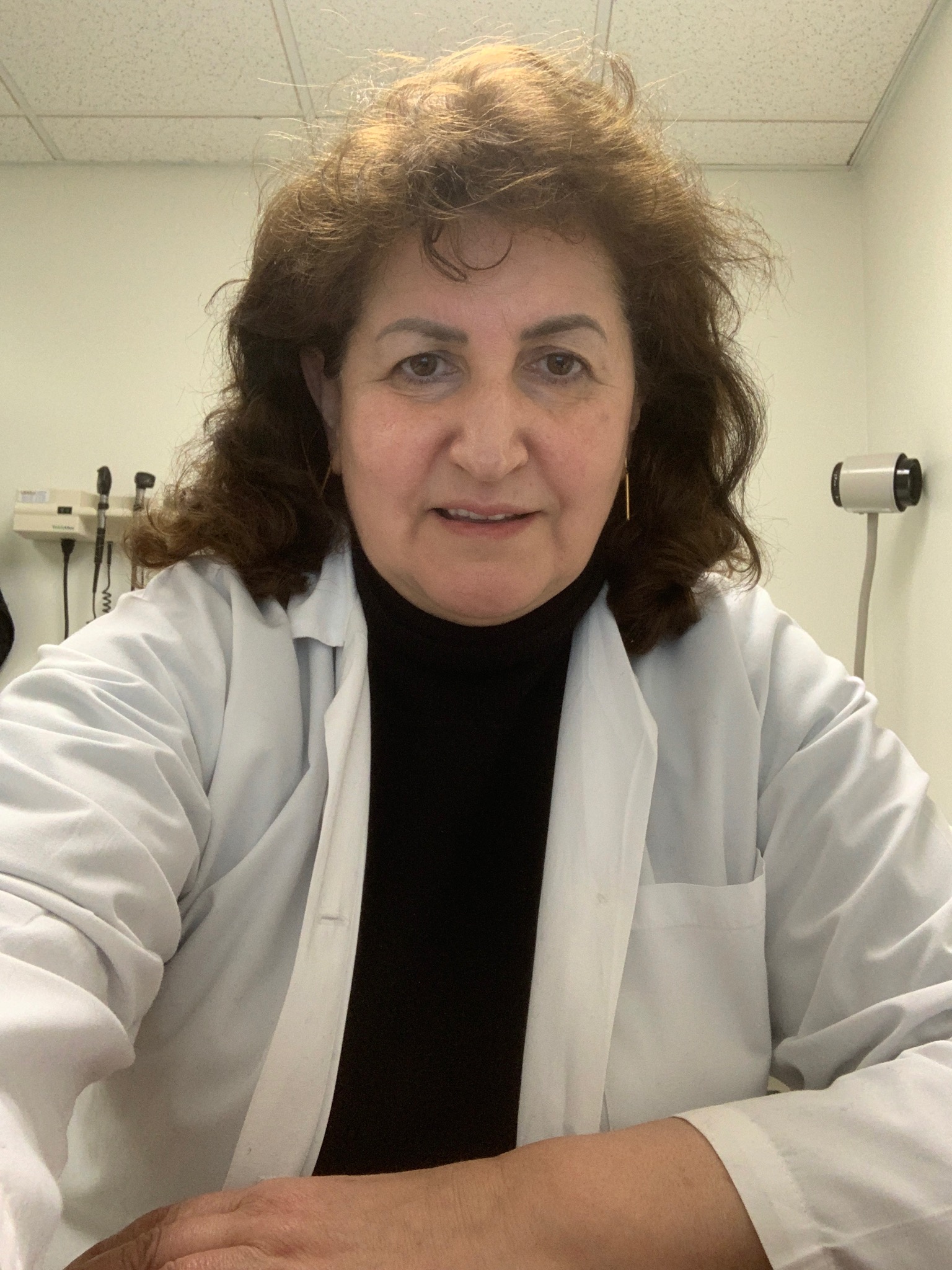Depression: Definition, Statistics and Types
Understanding, Managing, and Treating Depression

Written by
Dr. Bessy Martirosyan

Reviewed by
Dr. Ellen Machikawa

Written by
Dr. Bessy Martirosyan

Reviewed by
Dr. Ellen Machikawa
Definition
Depression is one of the common mental disorders that can disrupt your life. It is a mental health disorder characterized by a persistently low mood, often accompanied by an inability to feel pleasure.
Key Facts About Depression:
- 350 million people worldwide are affected by depression
- 16 million adults in the US experienced major depression in 2012
- Around 50% of those with depression don't seek treatment
- Depression is highly treatable with proper care
- If feelings persist over 2 weeks, it may be clinical depression
- Depression can affect eating, sleeping, working, and relationships
How Common is Depression?
According to the Centers for Disease Control and Prevention, 7.06% of the US adult population from 2009 to 2012 suffered from depression.
Depression Statistics
Types of Depression
There are several types of depression with varying symptoms and causes:
1Major Depression
Symptoms include interference with your capacity to sleep, work, eat, or enjoy everyday life. People may have depressive episodes that can last weeks to months and may have such episodes multiple times.
2Persistent Depressive Disorder
Previously known as dysthymia, this is a form of chronic depression with symptoms less severe but longer lasting than major depression. This form of depression may last as long as two years.
3Psychotic Depression
This is a form of severe major depression that is accompanied by psychosis (a condition in which a person loses contact with reality or is unable to think in an organized way).
4Perinatal Depression
Many mothers experience "baby blues" during the first week or two after childbirth. Still, postpartum depression persists and is more intense than baby blues and eventually interferes with your ability to care for your baby and handle other daily tasks. Around 10-15% of mothers have postpartum depression after delivering a child.
5Seasonal Affective Disorder (SAD)
This is a type of depression in which people experience depressive symptoms primarily during the winter seasons.
- This kind of depression can be effectively treated with light therapy.
- In addition to light therapy, antidepressant medication and psychotherapy may also be helpful.
6Bipolar Disorder
Bipolar disorder is characterized by extreme mood changes, including emotional lows (depression) and highs (mania or hypomania), that last for at least a few weeks at a time and may recur throughout the year. Bipolar disorder can be disruptive in many cases, and psychological counseling and medications can help minimize the disruption this illness can cause.
7Atypical Depression
This is a subtype of major depression that involves increased fatigue, sleepiness, weight gain, and/or increased appetite. It usually affects people at an early age, mainly when they are in their teens.
8Premenstrual Dysphoric Disorder (PDD)
This is regarded as a severe form of premenstrual syndrome (PMS). It usually occurs in the second half of a woman's menstrual cycle, especially during the days before the onset of the menstrual period.
Depression Symptoms
Recognizing the signs across different age groups is the first step toward getting help
Adult Symptoms
Common depression signs in adults
Emotional Changes
Persistent sadness, hopelessness, or empty feelings
Loss of Interest
No longer enjoying activities you once loved
Physical Changes
Unexplained weight changes, sleep disturbances
Energy Levels
Persistent fatigue and decreased energy
Cognitive Issues
Difficulty concentrating or making decisions
Self-Worth Issues
Feelings of guilt, worthlessness, or failure
Behavioral Changes
Feeling restless or unusually slowed down
⚠️ Serious Warning
Thoughts of death or suicide
Children & Teen Symptoms
Age-specific signs to watch for
Young Children
Clinginess, worry, sadness, or irritability
Physical Complaints
Unexplained aches, pains, or being underweight
School Issues
Refusal to attend school or poor performance
Social Withdrawal
Avoiding friends and social activities
Teen Mood Changes
Feeling misunderstood and overly sensitive
Behavioral Changes
Anger, eating changes, or self-harm behaviors
⚠️ Risk Behaviors
Substance use or risky activities
Older Adult Symptoms
Often overlooked or misattributed to aging
Cognitive Changes
Memory issues or personality changes
Physical Symptoms
Unexplained aches, exhaustion, or loss of appetite
Sleep Issues
Insomnia or significant sleep changes
Social Withdrawal
Preferring to stay home, avoiding others
Interest Loss
No longer wanting to try new things
⚠️ Serious Concern
Suicidal thoughts, especially in older men
🎗️Crisis Support Available 24/7
If you or someone you know is experiencing thoughts of death or suicide, help is available immediately.
National Suicide Prevention Lifeline
- Call 911 for emergencies
- Visit your nearest emergency room
- Contact your mental health provider
What Causes Depression?
- Depression can be caused by an imbalance of neurotransmitters in the brain, which are chemicals that help brain cells communicate.
- Physical changes in the brain, as seen in imaging research, can impact emotion, decision-making, memory, and motivation.
- Genetics and family history: People with first-degree relatives who have depression are at higher risk.
- Other medical conditions (e.g., diabetes, heart disease, cancer, chronic pain, inflammation) can also lead to depression.
- Highly stressful events and hormonal changes can trigger or worsen depression.
Triggers
- Stressful life circumstances, including bereavement, family disputes, and relationship changes.
- Incomplete recovery after prematurely discontinuing depression treatment.
- Medical conditions, particularly a medical emergency like a new diagnosis or a chronic illness like diabetes or heart disease.
Risk Factors
- Experiencing certain life events, such as a death in the family, problems at work, relationship changes, money troubles, and health issues. Severe stress.
- Not having any effective coping mechanisms.
- Having a close family member who is depressed.
- Using prescription medications such as corticosteroids, specific beta-blockers, and interferon.
- Using alcohol or illicit drugs like amphetamines for recreation.
- Suffering a head injury.
- Having a neurodegenerative condition like Parkinson's or Alzheimer's.
- Having experienced a major depressive episode in the past.
- Having a long-term illness, such as diabetes, cardiovascular disease, or chronic obstructive pulmonary disease (COPD).
- Suffering from persistent pain.
- Inadequate social support.
Is it Time to See a Mental Health Professional?
If you're experiencing most of these symptoms of a depressive disorder on most days, speak up to your doctor.
If you're hesitant to get help, talk to a friend or family member, a doctor, a member of your faith community, or someone else you can trust.
Depression Diagnosis
Your physician might identify you as having depression based on the following:
- Physical Exam: Your physician might conduct a physical examination and inquire about your health. Sometimes a physical health issue may be the underlying cause of depression.
- Lab Test: For instance, your doctor might check your thyroid to see if it is functioning correctly or perform a blood test called a complete blood count.
- Psychiatric Evaluation: Your mental health professional will enquire about your signs, patterns of thought and behavior, and feelings. To assist in addressing these inquiries, you might be asked to complete a questionnaire.
- DSM-5: The Diagnostic and Statistical Manual of Mental Disorders, aka the DSM-5, published by the American Psychiatric Association, may be used by your mental health professional to determine whether you meet the criteria for depression.
Treatment for Depression
However, 30.9% of patients either do not respond to treatment or do not respond well. About 4 out of 10 people experience a remission of their symptoms within a year, but depression can recur.
Symptom management typically consists of three steps:
- Support: This can include educating family members and talking about real-world solutions and potential causes.
- Psychotherapy: It is also referred to as talking therapy and includes options like cognitive behavioral therapy (CBT) and one-on-one counseling.
- Antidepressants: Antidepressants are a standard drug treatment option.
- TMS Therapy: Transcranial magnetic stimulation (TMS) is a noninvasive procedure that helps improve symptoms of depression. TMS is usually used when other depression treatments fail to provide positive results.
How Can You Keep Your Depression in Check?
There are various ways to keep depression in check. Here are some tips that may help:
- 1. Exercise regularly
- 2. Cut back on social media time
- 3. Build strong relationships
- 4. Minimize your daily choices
- 5. Reduce stress
- 6. Maintain your treatment plan
- 7. Get plenty of sleep
- 8. Stay away from toxic people
Frequently Asked Questions
Get expert answers to the most common questions about depression, symptoms, diagnosis, and treatment approaches
Does depression go away on its own?
Mild depression, like seasonal affective depression, can go away on its own without lasting long. However, severe depression symptoms last for years and don't go away on their own.
Treatment Timeline
Reaching out for help can get you feeling better faster than waiting for symptoms to resolve naturally.
Does depression make you tired?
Yes, fatigue and decreased energy are common symptoms of depression. Many people with depression experience persistent tiredness that doesn't improve with rest.
Energy & Sleep
Depression affects both energy levels and sleep patterns, creating a cycle of exhaustion and rest difficulties.
Can depression cause memory loss?
Depression can affect cognitive function, including memory and concentration. This is particularly noticeable in older adults where memory issues or character changes may be symptoms of depression.
Cognitive Impact
Depression affects brain function, impacting memory, concentration, and decision-making abilities.
Is depression a choice?
No, depression is not a choice. It's a legitimate medical condition caused by various factors including brain chemistry, genetics, medical conditions, and life circumstances.
Medical Reality
Depression is a medical condition with biological, genetic, and environmental causes - not a personal choice or weakness.
Conclusion
Clinical depression can affect anyone of any age, including children. But with proper psychological counseling, administration of antidepressant medications, or both, symptoms of clinical depression can be effectively treated.
Family and friends can immensely help provide non-judgmental and empathic support. Hence, with a good support network and good psychiatric care, many people suffering from this illness can and DO lead meaningful daily lives.